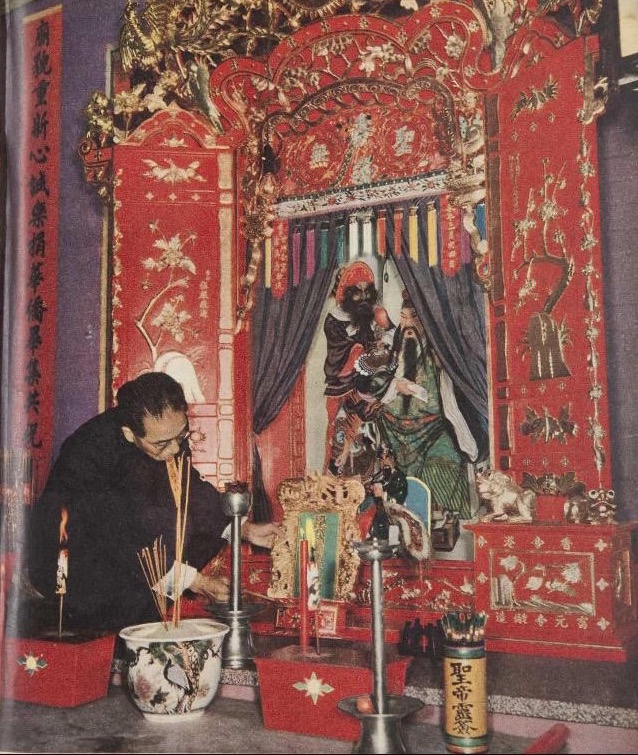By Lyn Collingwood, Bulletin 1/2023, March 2023

Glebe’s Pendrill St this February was choked with bumper-to-bumper vehicles and Victoria Rd thronged with pedestrians making their way from the light rail to Edward St. Their destination: – the Sze Yup Temple and Joss House spiritual and cultural centre, The occasion; Chinese New Year, a festival traditionally honouring deities and ancestors.
Glebe’s Taoist temple is dedicated to Kwan Ti, a warrior and patriot in the era of the Three Kingdoms, renowned for his loyalty and physical prowess. In Australia, immigrant Chinese people worshipped him as a wise judge and protector and important business deals were not made until he had been consulted for his guidance and blessing.
The story goes that during the 1890s, a decade of economic depression and racial tension as people competed for jobs, Chinese settlers in Sydney prayed for a sign showing where a temple dedicated to Kwan Ti should be built. They were led to a Glebe market garden with water views. The project was financed by immigrants from Sze Yup in the South China coastal province of Guangdong and supported by local organisations such as the Chinese Masonic Society.
The temple holding the Kwan Ti shrine was built in 1898, its design adhering to the principles of Feng Shui. Added in 1903 were an eastern ancestral hall (chapel of Departed Friends) and a western hall dedicated to the god of wealth (chapel of the Joss of Good Fortune). Chinese people from all over the Commonwealth attended the official opening in 1904.

Relations with the wider Glebe community have been mostly harmonious although initially some neighbours were irritated by the noise of fireworks and some Glebe Council aldermen objected to the complex being classified as a church and exempt from rates. There was occasional jostling for space on the Glebe Point trams, filled with Chinese passengers and their offerings of fruit and vegetables. In 1954 tensions developed when the Sydney City Council resumed Edward St land, the site of three wooden houses, and made plans to turn the area into a children’s playground. With small backyards and large families, local parents supported the initiative but, after the Chinese Consul-General intervened, Council transferred the land back to the Trustees.
Fire has posed the greatest threat. A blaze in the central hall damaged its roof in 1952. Two years later the entire structure went up in flames. In 1955 drums banged, cymbals clanged, dragons danced, fireworks exploded and thousands packed the complex to celebrate its rebuilding. Arson was suspected in 2008 when much of the temple’s roof and the office and its contents were destroyed. Again, the damage was rectified.
The Sze Yup Temple is heritage listed, as is Sydney’s other Chinese temple: the Yiu Ming in Alexandria, built in 1908-9 and named for two towns in Guangdong province. In contrast to the Alexandria temple’s position in a congested area with heavy truck traffic, Glebe’s temple is a tranquil place for quiet reflection and worship.
See also article about the temple in Glebe’s Heritage Buildings











There are no comments yet. Please leave yours.